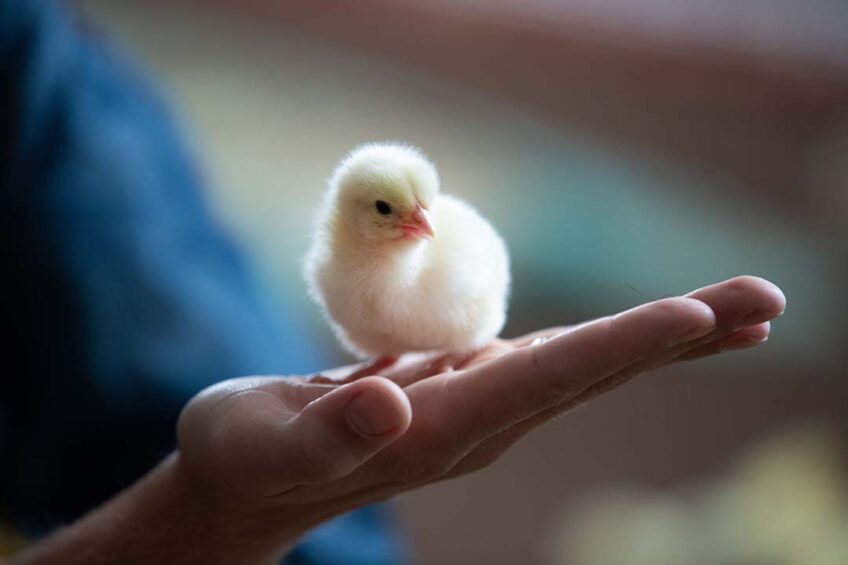Core elements of antibiotic stewardship in the poultry industry

The poultry industry is taking steps to reduce antibiotic use due to the adverse effects of antibiotic resistance on public health. Advances in science-based antibiotic stewardship principles create an ecosystem in which poultry health improves, the need for antibiotic use decreases and poultry production can flourish. In recent years, many countries have established policies to reduce antibiotic use in the poultry industry and have introduced alternative strategies to improve poultry health and welfare.
Poultry production systems are tending to become increasingly intensive in response to the ever-growing demand for poultry products. The pressure to produce more and quickly can make flocks more vulnerable to pathogens and disease outbreaks, especially when farm management does not evolve along with changes in the farming system. Public health concerns have led to subtherapeutic antibiotic use being banned to avoid the proliferation of antibiotic-resistant pathogens.
Mistakes in farm management can no longer be corrected through the use of antibiotics. Antibiotic stewardship – the effort to measure and improve antibiotic prescription and administration on poultry farms – is vital to effectively treat infections, avoid unnecessary antibiotic use and combat antibiotic resistance.
Eliminating the non-essential use of antibiotics
Poultry production systems can minimise the potential for antibiotic resistance by eliminating the non-essential use of antibiotics. This can be done by reserving antibiotics only to treat sick flocks and for non-routine disease control. Antibiotic administration is not permitted for growth promotion, feed efficiency, routine disease prevention or other such uses.
Veterinary supervision
Only medicinally-necessary antibiotics can be used to alleviate disease or avoid pain and suffering, in consultation with a veterinarian or qualified professional. A veterinarian needs to undertake a proper assessment of disease risk and develop a health and welfare plan and ensure the efficacy of antibiotics. All antibiotics used must be recorded and regularly reviewed by the veterinarian to understand the reasons for their use and possible changes in management systems to help reduce the need for antibiotics over time. In addition, a third-party audit is required to verify compliance.
Introducing regulatory policies
Governing boards need to introduce regulatory policies to prevent antibiotic resistance. For instance, in many countries the therapeutic use of antibiotics on poultry farms must exclude the use of medicinally-important antibiotics for humans. In addition, the administration of prophylactic and growth-promotion antibiotics on poultry farms has to be restricted. Establishing creative ways of observing the regulations is essential.
Disease prevention is key
To prevent disease in poultry, it is important to consider the environment, drinking water, air quality, biosecurity, farm management and vaccination programmes. Creating the right environment for birds throughout the whole production chain is critical in reducing disease challenges and, therefore, the need to treat the flock.
Parent flocks and hatcheries need good hygiene practices to ensure high-quality, healthy chicks are delivered to the farm. In addition, the correct size and structural condition of the house, capacity of the ventilation system, maintenance of litter quality, functioning of feed and water systems and the stockman’s level of competence also all need to be considered. All non-essential vehicles should be prevented from entering the biosecure area of the farm and all vehicles entering the biosecure area disinfected when entering and leaving the poultry farm.
Access to the live bird areas should be restricted to farm staff and essential visitors only and all equipment cleaned and disinfected after each production cycle. Effective vermin control and vaccination programmes are required to reduce the risk of bringing disease and spreading it on the poultry farm.
Improving poultry gut health
Every farm needs to implement a plan to proactively manage and improve poultry gut health and thus reduce the need for antibiotic administration. Birds should be provided with healthy feed prepared and stored in a way that minimises the risk of contamination. In addition, appropriate strategies should be introduced to optimise gut health using non-antibiotic additives, such as probiotics, prebiotics, symbiotics, phytobiotics and enzymes.
Probiotics, including Lactobacillus, Bifidobacterium, Bacillus and Streptococcus, can be used to prevent and treat microbial imbalance by altering gut microbiota populations in the host. Prebiotics, including inulin, lactulose, phenolics and oligosaccharides, change the composition and activity of gut microbiota with a beneficial physiological effect on the host. Prebiotic-like compounds, such as blackberry, cranberry and blueberry derivatives, for example, have antimicrobial effects against a wide variety of enteric bacterial pathogens and can be used in the poultry diet. Synbiotics are a combination of prebiotics and probiotics with a synergistic relationship. These provide nutrients to foster beneficial gut microbiota.
In-ovo delivery of phytobiotics has positive effects on hatchability, chick quality, antioxidant activity and gut development via mechanisms such as modulating gut microbiome and gene expression of the host. Finally, feed enzymes can be used to eliminate anti‐nutrients of feed origin and improve the efficiency of nutrient capture from feed and gut health, thus reducing the need for antibiotic use.













